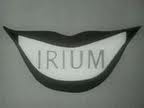Pepsodent: the beginning
Pepsodent was a popular brand of toothpaste back in the mid-20th century. It was probably introduced in the earlier parts of the 20th century as a dentrifice in powder form, but eventually took on the recent-day paste form. Pepsodent was owned by the company Unilever, a British and Dutch company that sells an assortment of consumer products throughout the world, and was advertised through commercials and ads to be able to fight tooth decay and whiten teeth. Its most popular slogan was the catchy phrase, “you’ll wonder where the yellow went, when you brush your teeth with Pepsodentâ€, as evident in the youtube video below. Pepsodent was well-known for its minty flavor derived from sassafras, and was claimed to contain the key ingredients:
- Irium is actually sodium lauryl sulphate, a type of surfactant (detergent) that is commonly found in toothpastes nowadays. Lauryl sulphates help to clean teeth and provide foam that helps to carry away debris. It also has antibacterial properties and can penetrate and dissolve plaque.
- The other ingredient, “I.M.P†was purpoted to whiten teeth. What its letters individually stand for remains unknown.

RETRO Pepsodent Toothpaste Commercial – 1950s
The glory days
Pepsodent was alleged to struggle through the late 1920’s, at which time it began sponsoring radio programs. For example, in 1929, it became the primary sponsor of the popular “Amos `n Andy” radio program. Then in 1938, Charles Chuck Luckman (then known as “Boy Wonder of American Business”, and was named president of the Pepsodent toothpaste company in 1939 at the age of thirty; he later became president of Level Brothers) managed to persuade Bob Hope to promote the toothpaste in his show, “The Bob Hope Pepsodent Show”. This led to remarklable increase in name recognition. In the 1940’s, Pepsodent was so popular that Rodgers and Hammerstein included a reference to it in their long-running 1949 hit musical “South Pacificâ€, when the Seabees sing about the native woman Bloody Mary:
Bloody Mary’s chewing betel nuts
And she don’t use Pepsodent.
It’s also referenced in some versions of Cole Proter’s song “You’re The Topâ€:
You’re an old Dutch master, you’re Mrs. Astor,
You’re Pepsodent
One of the great memories of Pepsodent is from an old Mad Magazine 50 or 60 years ago. It had a cartoon (realistic) of Leonardo Di Vinci looking at his easel, sitting in front of the Mona Lisa thinking, “I wonder where the yellow went?” Among the tubes of paint is a tube of Pepsodent.
Another popular Pepsodent advertisement was an oversized neon sign projecting a girl on a swing that hung in New York in Times Square in the 1930s. The larger-than-life advertising sign was so successful, it was depicted again in the 2005 remake of the movie “King Kong.”
The decline of Pepsodent
In the 1960’s when people became aware of the role of fluoride in fighting cavity, Pepsodent failed to incorporate fluoride into their toothpaste, which resulted in other competing toothpaste companies taking the front seat in the toothpaste industry, such as Colgate and Crest and Gleem. Pepsodent’s sales greatly dwindled. An Ad Age survey done around the turn of the 21st century of the U.S. toothpaste market found Colgate and Crest varieties at the top, sharing 60 percent of the market. Pepsodent was placed 10th, with 1 percent of the market, even though it was usually sold as a “value brand,” meaning it is a lot cheaper than the bigger brands. Despite efforts in changing the ingredients and improving the toothpaste, the brand Pepsodent never rebounded from the wane in sales.
Recent days
In 2003, household-manufacturing company Church & Dwight purchased the Pepsodent brand rights in the United States from Unilever. Â Unilever still holds the rights to Pepsodent, where it is sold outside the U.S. Church & Dwight also holds the rights to such toothpaste brands as Aim, Arm & Hammer, Close-Up and Mentadent. This change of ownership eventually led to addition of fluoride to the toothpaste. The company’s new marketing strategy was retro packaging, retro flavor, modern levels of fluoride content and low price. They offer two versions of Pepsodent; one with the original flavor, as some consumers like the minty flavor it had in its glory days, and another with enhanced whitening ingredients. Both versions, according to Church & Dwight, feature a “proven cavity-fighting formula” that aids in the removal of plaque and promotes strong enamel and healthy gums as well as tartar control.
The American Dental Association recommends brushing your teeth at least twice a day with a fluoride toothpaste that bears the ADA’s Seal of Acceptance. Church & Dwight’s Aim Cavity Protection Toothpaste and Arm & Hammer Dental Care Advance Cleaning Mint Toothpaste with Baking Soda bear the ADA seal of acceptance. However, as of July 2010, Pepsodent toothpaste, despite its staying power over the decades, did not.
